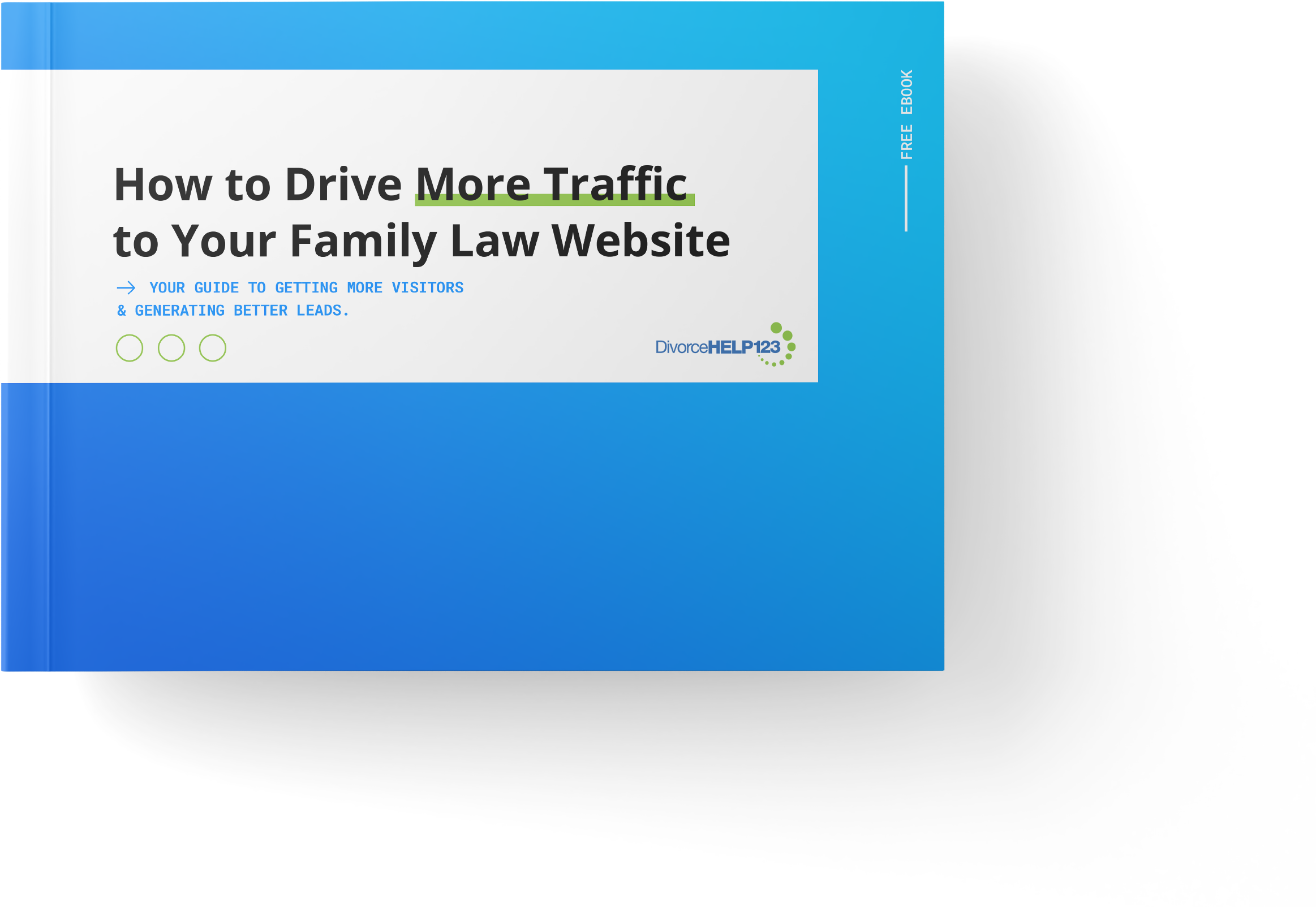What’s the one strategy that’s sure to be recommended when you ask how to get more clients for family law firms? Ask around and you’ll get a thousand answers, ranging from increasing service options to exceeding client expectations.
Ask the cold, hard data, though, and you’ll not only debunk those answers but find out what’s truly important.
Myths people tell you about how to get more clients
Let’s start with the strategies you’ll hear around the most. Even though most of these sound reasonable, and they might work, they’re not quite as amazing as they seem.
- Impressing website visitors with superior legal expertise is the best way to increase consultations
- The key to converting initial consultations into paying clients is to demonstrate how the firm provides more and better legal services than other law firms
- Exceeding clients’ expectations will lead them to return for post-decree matters and refer their friends
- Client satisfaction rates determine their loyalty to my firm
- The more services we provide for our clients, the more loyal they will become
To figure out whether this advice stands to test, we looked into expert research by service industry leader Gartner, as provided through their landmark concept of “The Effortless Experience”.
Let’s break this down one by one, shall we?
Superior legal expertise will only get you so far
It might seem like a no-brainer to astound your potential clients with complex legalese. After all, when someone is looking for high-quality legal services, they’ll certainly choose the one who seems to have the deepest and most professional grasp on the law. Even if they don’t understand it, they’ll definitely see it as a sign of expertise, right?
Not quite. Research shows that customers overwhelmingly prefer effortless experiences.
That means that the best way to increase consultations is to focus on offering a low-effort service experience. Legal proceedings are difficult, time-consuming, and emotionally draining. Clients want as little to do with that as possible.
So, if you want to boost consultations, drop the legalese and focus on assuring your clients that working with you won’t demand high effort from them.
Conversions don’t depend on comparing yourself to the competition
More isn’t always better. Or, to put it another way, overwhelming your potential clients with a big list of legal services won’t convince them to contract your services.
As proved by the Gartner research, the one common want in most service clients is a low-effort experience with as few service interactions as possible.
Listing every legal service you can provide in-depth might seem like a good idea, but in a real-case scenario, you’re just making them picture all of those difficult, high-effort experiences.
That’s not to say that the broad variety of services and expertise you’ve accumulated over the years is useless to them. Quite the opposite.
The key here is framing. Converting consultations into paying clients doesn’t depend on demonstrating that you’ll provide more and better legal services. Instead, channel that truth into how it’ll make your client’s life easier and their legal interactions few and far between. Take the burden off their shoulders.
Exceeding expectations is mostly just show
This is a big one. If a client expects something, and is more than happy to pay for that something, then exceeding expectations will lead to client satisfaction that makes them stay for more legal services as well as refer their contacts.
While yet again this myth seems logical, research shows the opposite. Gartner’s finding concluded that exceeding expectations make virtually no difference whether they continued services or not.
Do you know what did make a difference, though? The number and difficulty of service interactions. Those have a big impact on client loyalty.
Client satisfaction won’t create loyalty
It’s generally believed that keeping clients satisfied makes them loyal, but that’s not always the case.
According to Gartner, up to 20% of satisfied clients said they were intending to find a different provider.
So if it’s not satisfaction that drives loyalty, what is?
The answer to that question can actually be found the other way around: it’s better to ask “what makes clients disloyal?”.
On that note, the research is clear: 96% of clients who put in high effort in service interaction become disloyal. Having to repeatedly go through the frustration and stress of a high-effort experience is the #1 reason clients leave for other providers.
Therefore, to create loyalty you shouldn’t strive just to keep clients satisfied, but to also reduce the difficulty and frequency of their service interactions.
While you’re at it, you might want to check out our article on the main drivers of client disloyalty.
More services won’t promote loyalty, either
Let’s circle back to some of the points we’ve seen in this article. We know as a fact that:
- Overwhelming clients with the possibility of more high-effort interactions in the form of subsequent legal services won’t help conversions.
- Loyalty doesn’t depend on satisfaction.
Put those two together, and it becomes rather obvious that showering your clients with potential services won’t automatically promote loyalty. It can actually cause the opposite, as you’re essentially promising them more stressful and energy-demanding experiences.
For example, Gartner’s data says that clients who required a service interaction while using a tech-based product were 4X more likely to become disloyal.
One big truth on how to get more clients: low-effort experiences
Here it goes: potential clients choose what’s easy, while loyal clients return and refer. It’s all about low-effort experiences.
Think about it. Look around you, and find the one unifying factor that technology has brought to service industries.
It’s the ease of use. Not the satisfaction, not the number of services, not the legal jargon. Big companies in tech that have made a name for themselves in everyday life have done so through low-effort experiences.
Amazon, Netflix, and Uber all have the same thing in common. They took regular service interactions and used technology to make them as low-effort as possible.
It stands to reason that other service-based industries, like law, should follow suit.
Through research, we’ve found that the key to getting more clients as a family law firm is to reduce service experiences to as little as possible and to reduce the effort required to get through the rest.
Clients don’t want to find forms, download them, print them out, and then do all that paperwork all over again just because a valuation was off or something minor changed during the process.
That’s why we’ve developed our products to provide as easy of an experience as possible, to both family law firms and, more importantly, their clients.

